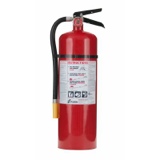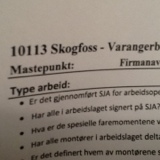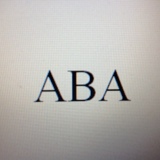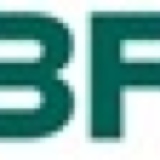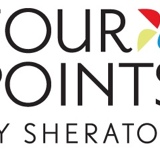Information
-
Document No.
-
Audit Title
-
Client / Site
-
Conducted on
-
Prepared by
-
Location
-
Personnel
Element 1. Leadership. All leaders are committed to the safety, health and welfare of their soldiers and workers. Sound judgements are made and behaviour is influenced to optimise sound WHS outcomes. Operational capability is maintained and relevant Legislative compliance is achieved or is exceeded.
-
1.1 Commanders and officers acquire WHS knowledge and keep up to date knowledge of WHS matters.
-
1.2 The WHSMS demonstrates safety commitment and leadership by relevant commanders and supervisors? <br>
-
1.2.1 Is welfare support for all soldiers/ workers demonstrated by policy and action? <br><br>
-
1.3 The Safety policy is relevant to the nature and scale of the organisations. health and safety risks?
-
1.4 The WHS Plan includes objectives, resources, timeframes and accountabilities?
2. Performance Management
2. WHS Performance is monitored, audited, and reviewed to provide confidence of compliance, trends and continuous improvement.
-
2.1 WHS performance is measured and reported by various methods to assess and report WHS performance
-
2.2 WHS performance measures confirm effectiveness of WHS initiatives and the reduction of injuries and severity?
3. Communication and Consultation
3. WHS transparent communication is maintained throughout Army and enabling and supporting elements in order to accelerate resolution of WHS issues and contribute to proactive outcomes
-
3.1 Communication on WHS with soldiers/workers occurs and is supported by policy, documentation/evidence and records of meetings and passage of information via chain of command?<br><br><br><br><br><br><br>
-
3.2 Issues are elevated upwards through the Chain of Command where necessary?
-
3.2.1 Policy on HSRs are documented and implemented: dispute resolution is catered for? <br>
4. Governance and Assurance
4. Governance and Assurance. Relevant legal, regulatory matters , codes of practice and othe WHS requirements are in place, understood and monitored. Effective WHS systems, policies and assurance ensure WHS integrity across COMD/FMN/TE/Unit
-
4.1 A governance structure exists to coordinate and maintain a WHSMS across Army.
-
4.2 An assurance system exists within Army to monitor and review WHSMS performance<br>
-
4.2.1 Documented policy on internal and external audits exists and is implemented; compliance with regulatory bodies is achieved. Management reviews occur on a scheduled basis.
5. WHS Information
5. WHS Information. Quality WHS information enables commanders to make informed decisions. WHS Information Systems provide leaders with data nd information that enables sound decision making and risk management outcomes.
-
5.1 A system for collecting, analysing and interpreting relevant WHS data exists and is operational and accurate.<br>
-
5.2 Storage and dispopsal of WHS information is IAW Defence and Army OIP.
6. Education, Awareness and Skilling
6. Army workers are skilled, aware and knowledgable in WHS matters relevant to their rank and role. Leaders and supervisors are aware of WHS tasks/legal issues and are competent to conduct assigned activities responsibly.
-
6.1 General WHS Modules and learning packages are available in Defence training courses for Induction and Awareness training and specific training, such as HAZCHEM and radiation, are easily available.
-
6.2 Specialist WHS training and awareness is provided when and where required.
-
6.3 Army Force Preservation Training is attended by all members annually
-
6.4 WHS training is provided to Army contractors , visitors and workers that details and explains their WHS responsibilities.
7. Occupational Health
7. Occupational Health and Hygiene. Optimal physical and mental health is facilitated throughout Army. All soldiers are assessed regularly for physical and mental health and fitness and are protected by heath hazards at work. Physical and mental health issues are identified and effectively managed.
-
7.1 Workplace occupational health and environmental monitoring, including health and biological surveillance programs as specified by legislation or regultions and are based on comprehensive Risk management programs.
-
7.2 Army has systems for ensuring that occupational exposure (heat/HAZCHEM/biological) are identified, minimised and managed. Workers receive appropriate treatment and are transitioned to quality long term management.
8. Hazard Identification/Military Risk Management
8. Hazard Identification and Risk Management. WHS threats and risks are appraised regularly and controlled to As Low As Reasonably Practicable (ALARP). Confident and robust risk management results in effective controls.
-
8.1 Documented policy exists regarding identification and recording of all hazards and WHS risks with the Fmn/TE/Unit
-
8.1.1 Environmental and work process(SOP) WHS risks and emergencies are identified and assessed.
-
8.1.2 HAZCHEM ( incl DG) risks and controls are identified, assessed and monitored IAW Regulations
-
8.1.3 Major Hazard facilities are identified and assessed IAW Regulations where applicable
-
8.1.4 Base and unit emergency risks ( fire, explosion, flooding and structural collapse) have been identified and assessed.
-
8.1.5 Documented processes exist for Hazard ID and includes access to specialist WHS and Health care ie Lasers, illness outbreaks, food contamination, ammo contamination.
-
8.1.6 All hazards and risks inherent in day to day operations have been assessed and made available to those that need to know; resources to collect store and analyse Hazard Id data has been provided? Hazards are eliminated where possible or reduced to ALARP.
-
8.1.7 Hazards and MRM data is regularly reviewed and updated.
-
8.1.8 Hazard ID information can be elevated upwards where necessary and shared laterally as required
8.2 Fmn/TE/Unit has determined the likelihood and consequence of riks events and determined the priority for treatment ; all control processes are in place and understood.
-
8.2.1 Documented policy exists that requires the risk assessment of all hazards within the TE/Unit.
-
8.2.2 Plans have been developed to eliminate or control the unit's highest risks.
-
8.2.3 An MRM process is in place
9. Systems of Work/ SOP
9. Systems of Work : Defined as method adopted to undertake work or a specified task. Army elements adopt standard procedures to ensure work is undertaken in a safe and healthy manner and to consistent high health and safety standards.
-
9.1 All Army, Work practices, instructions, and procedures (OIP) comply with WHS Legislation , Regulations and Codes of Practice.
-
9.2 All work instruction identify hazards and control mechanisms.
10. Platforms, Infrastructure, Plant and Equipment (Weapons)
10. Elimination and mitigation of hazards should preferably occur in the design and acquisition of platforms, infrastructure, plnat and equipment ( includes weapons). The hierarchy on controls will normally be applied to eliminate or reduce risk. The RODUM system should be used where this does not occur.
-
10.1 Incoming plant and equipment is checked prior to use and controls applied
-
10.2 Through Life hazards and WHS risks associated with platforms, infrastructure, plant and equipment are identified and communicated to all.
-
10.3 Platforms, infrastructure, plant and equipment are maintained IAW Legislative and other mandatory and or technical or OIP guidance. ie Army maintenance policy and instructions.
11. Contractors and Suppliers
11. Contractors and Suppliers /Visitors are protected from known and adverse WHS risk; WHS risk is reduced to ALARP.
-
11.1 Army ensures that contractors, visitors and suppliers of on site services are made aware of, and comply with, WHS responsibilities.
12. Emergency Preparedness
12. Emergency Preparedness: Army provides rapid planned response to emergency or crisis situations and is prepared to respond quickly and effectively to protect its people and capability.
-
12.1 Potential emergency events are identified and response plans and procedures are developed. These are reviewed at least annually or after a real event.
13. Emergency Response
13. Emergency Response(ER): Comds, fmns and unist have comprehensive ER plans that are properly resourced and tested Business continuity plans are in place to recover/return to normal operations and tasking as soon as is practicable. Foreseeable response scenarios are documented, communicated tested and reviewed.
-
13.1 Emergency plans are tested and practiced and incorporate lessons learned from exercises, local ER events and from external sources such as Police, SES, Fire and Ambulance Services..
14. Treatment/First Aid
14. Treatment and First Aid: Health and injury issues pertinent to Army operations and workplaces are identified, assessed and treated with effective controls and quality treatment. Medical response achieves best functional capability and outcomes for personnel.
-
14.1 First Aid Policy is relevant and documented; suitable resources are provided and personnel are trained in first aid.
-
14.1.1 First aid training is provided as required
-
14.1.2 JHC and servicing health centres provide ongoing treatment and longer term care where and when needed.
15. Incident Management/Reporting
15. WHS Incident Management. A WHS incident is an unplanned event resulting in or having potential of injury , ill health, damage or other loss in the workplace. Effective use of WHS Incident information contributes to situational awareness and can positively improve workplace safety. Failure to report incidents is a command and management failure. notification of fatalities, serious and dangerous incidents is mandatory.
-
15.1 Army identifies, investigates, records and reports workplace fatalities, injuries, illnesses , serious and dangerous incidents to meet the legislative requirements of the Act. WHS reporting works in concert with the Army Incident Management System (AIMS) <br>
-
15.2 Army preserves incident sites where possible and where necessary advise the regulator of reasons for any necessary disturbance.
-
15.3 Army can access specialist and or external expertise for causal investigation of incidents and for the development of any corrective actions.
16. Rehabilitation
16. Rehabilitation. Aims to achieve maximum function and retention of personnel post injury or illness. high levels of retention must be achieved through sound management of medical related incapacity.
-
16.1 Army has documented rehabilitation policy and processes that includes workers being aware of entitlements and leaders and supervisors ensuring sound management of rehabilitaion cases.
-
16.2 Welfare Boards are conducted IAW DI(A) PERS 33-11
17. Compensation
17. Compensation.
-
17.1 Are Army's policies and processes understood and implemented by all levels of command








